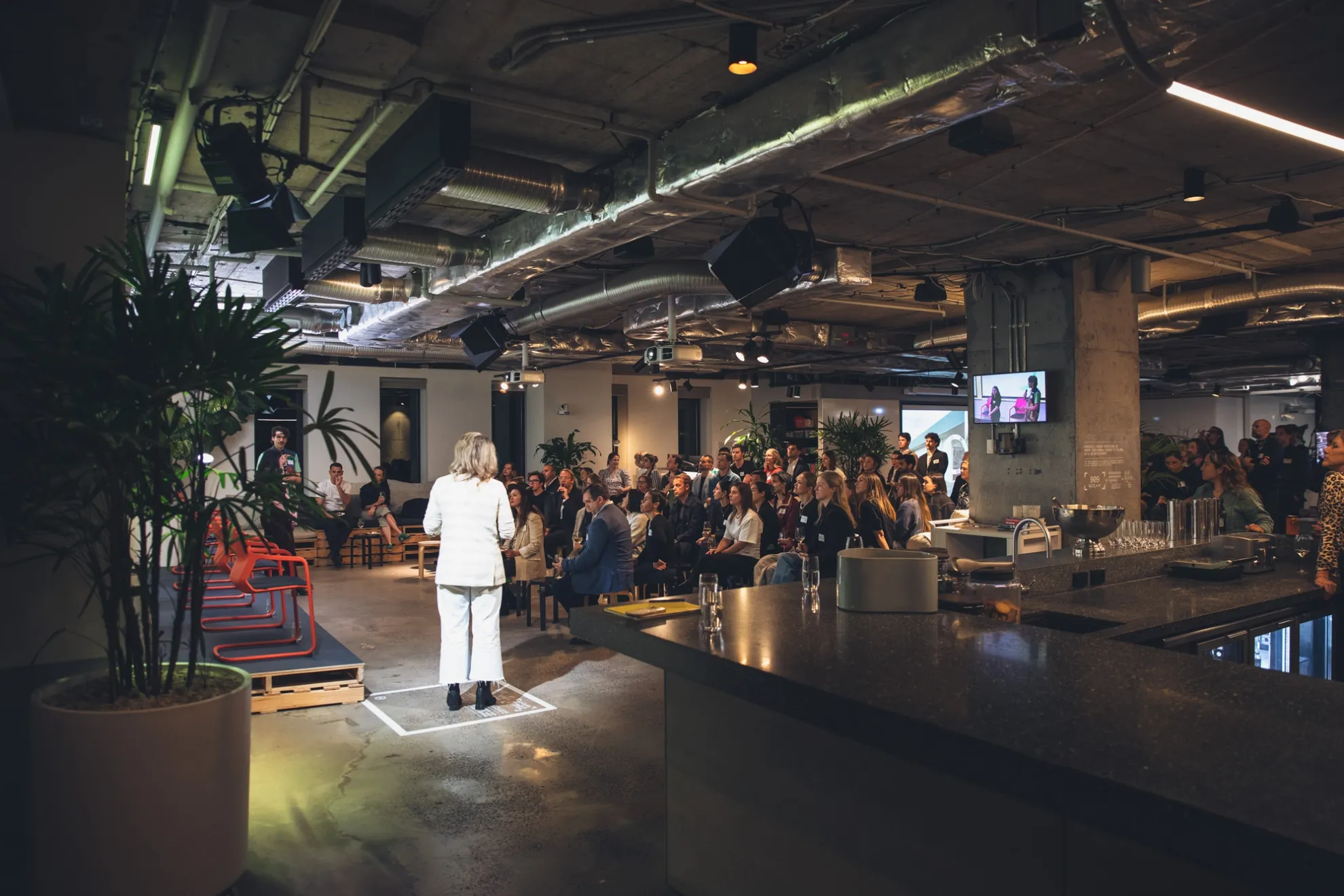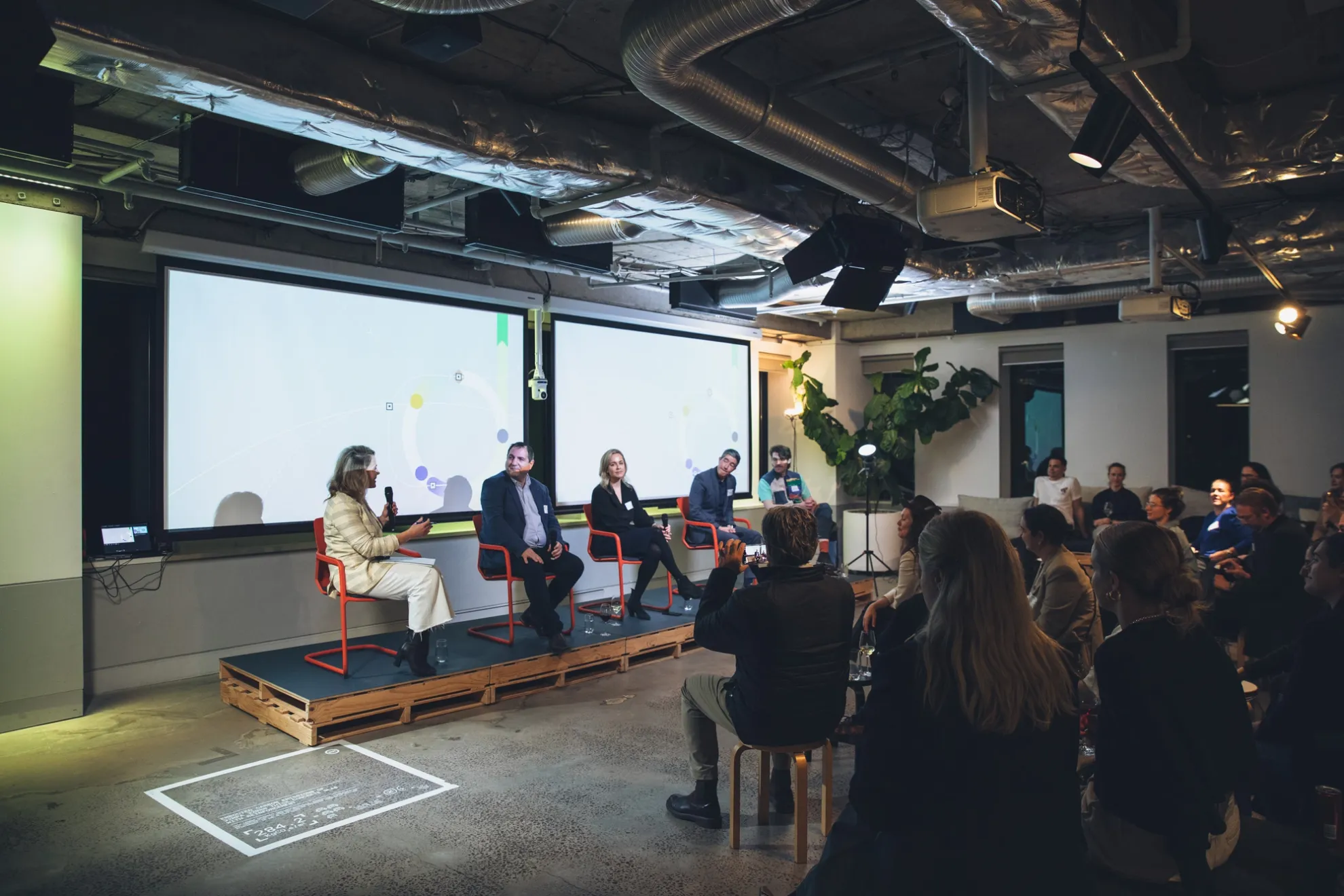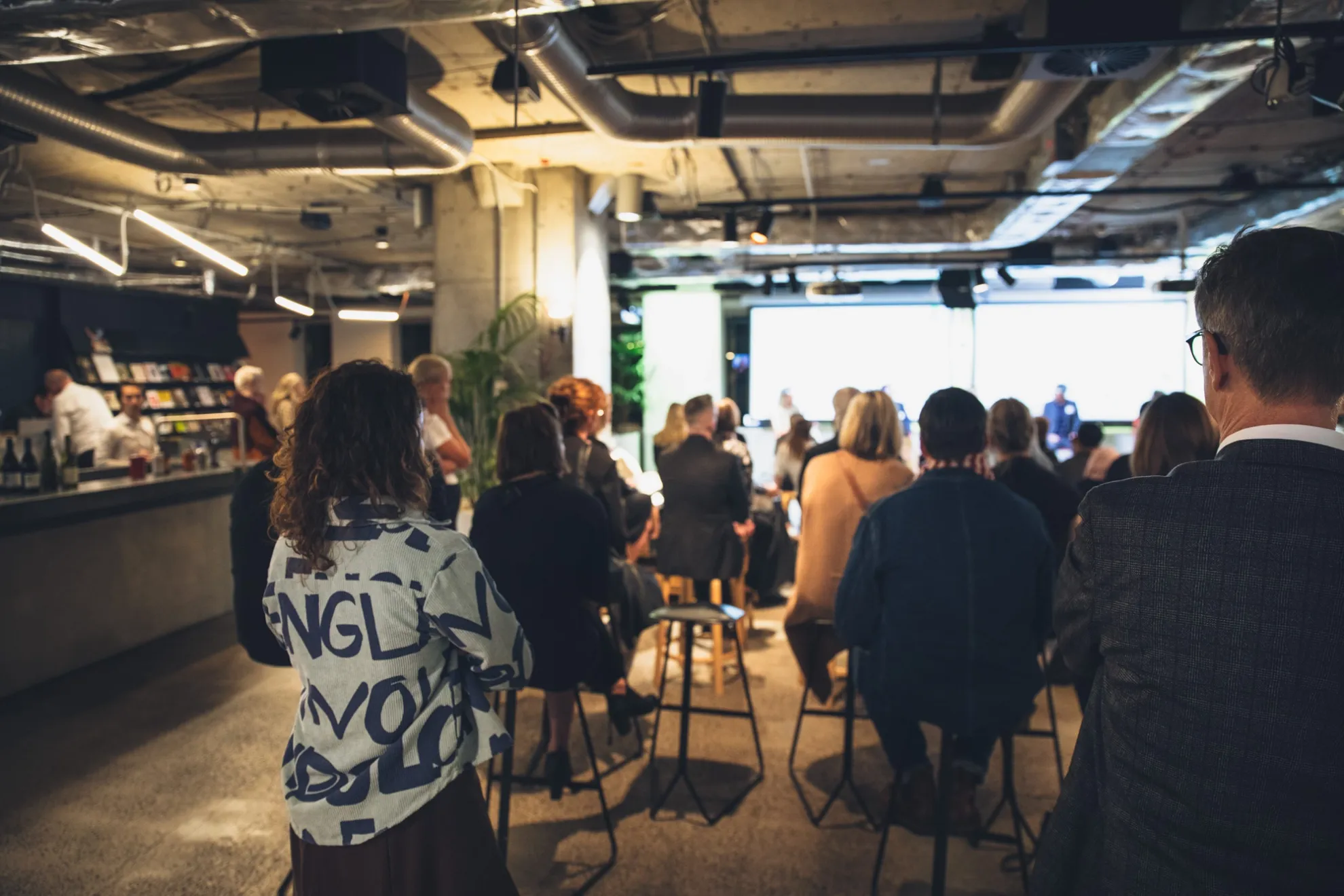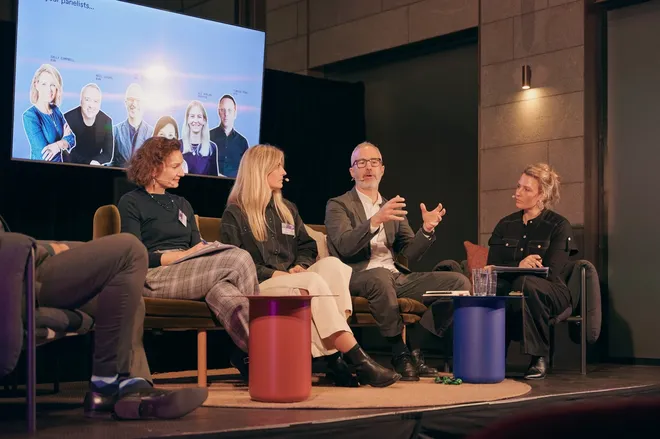News, Opinion — July 30, 2025
Making De-fit Mainstream
Last week, we launched the De-fit Guidelines for Commercial Fitouts at our BVN Sydney Studio. With a panel of experts and an invested audience we explored and debated the best ways our industry can reduce waste, recover value and support a circular economy.
Waste only exists if we choose it to. Most building materials are sent to landfill before the end of their functional lifespan, yet half of those materials could be recirculated.
Sally Campbell, BVN Principal
BVN Principal Sally Campbell set the scene with Australia’s waste problem, stating the building industry is responsible for 39% of domestic waste annually, created during construction and demolition.
Sally explained that de-fit, the process of removing a commercial fitout at the end of a lease, presents an ideal opportunity to turn waste into resources. BVN Regenerative Practice Coordinator Adrian Taylor added that the industry must shift from a linear approach to embracing circularity to ensure materials are recovered and reused. "De-fit changes our perception of value. Where demolition cares only for creating an empty site, de-fit shifts our focus to retaining value in building materials," Adrian said.
BVN Practice Director Amelia Lipa stepped through our De-fit Guide highlighting the De-fit Kit — a set of practical tools designed to support the planning and execution of the de-fit process. "This guide is intended for everyone, but speaks directly to key stakeholders, including clients, project managers, designers, builders, and sub-contractors, outlining how each can play a role in the de-fit process. Collaboration between all parties is key to a successful outcome," Amelia said.

Sally Campbell, Amelia Lipa and Adrian Taylor introduce the De-fit Guide
Dissecting De-fit with our experts
To explore the ways to make de-fit mainstream, we invited industry leaders to the stage, including Paul Vella, Co-Founder of Revert Group, Jade Nicholson, Project Manager at Multiplex, Ritchie Djamhur, Founder of Superyard and BVN's Regenerative Practice expert, Adrian Taylor.
Paul Vella shared his passion for recovering materials from sites and redirecting them for sale, donation or reuse. He expressed how changes in the legal definition of waste and levies applied by the Environment Protection Authority make discarding materials undesirable for both the environment and the economy. Paul also implored that investing in asset audits early can reap big rewards.
Sustainability often gets left too late. If we can engage de-fit early on, we can work with our pathways partners to divert materials from landfills.
Paul Vella, Co-Founder of Revert Group
Jade Nicholson, Project Manager at Multiplex, was the event's provocateur. Self-described as new to the de-fit conversation, Jade provided grounding and valuable insight on the realities of supporting circularity on an active worksite. Jade discussed some significant challenges, such as maintaining warranties, considering the after-life of Visual Mock Up (VMUs) and being aware of the hidden waste in product and component packaging.
Ritchie Djamhur, Founder of Superyard, shared his experience creating a marketplace for surplus building materials. Superyard offers an outlet for the public and a marketplace to manage an entire organisation's portfolio to keep materials and assets in circulation. To avoid risk, Ritchie observed that some projects would procure 30% of additional materials that may never be used.
I was in awe of how much waste there was. I found that a lot of the waste can be valuable to someone else. That's why I invented Superyard.
Ritchie Djamhur, Founder of Superyard

What should we stop doing today to allow circularity to thrive tomorrow?
How can circularity thrive?
Sally asked the panel, “What should we stop doing today to allow circularity to thrive tomorrow?” Ritchie suggested taking a common-sense approach to circularity, explaining, “Don’t write off the surplus stock".
Jade highlighted the wasteful practice of installing carpets and ceiling tiles into buildings before handover, known in the industry as 'warm shell' fitouts.
Stop specifying ‘warm shell’ [or sacrificial display fitouts]. We’ve reached completion on projects and the next day, the fitout was ripped out — the carpet, the ceiling tiles, everything [was sent to landfill].
Jade Nicholson, Project Manager at Multiplex

How can we plan for a building’s afterlife from the start?
How can we plan for a building’s afterlife from the start?
When considering ways to embed circularity into everyday thinking, Ritchie suggested, “You should begin with no end in mind. If you have the luxury of starting a project from the beginning, think about every element because it will make a difference in the end.”
Paul reminded our audience that in a linear economy, carpet tiles are destined for landfill. But if we specify and plan for stewardship take-back programs they can be saved.
Adrian suggested that the industry should interrogate the right lifespan for any product or material. Designing a product to last for the appropriate amount of time supports adaptability.
Like paper straws that turn to mush just as we're finished, we can design products to last one day more before they are broken down. If they do last longer, then we can plan to resell or rent them.
Adrian Taylor, BVN Regenerative Practice Coordinator

Guests gather at the BVN Sydney Studio for our De-fit Guide launch
The De-fit Guidelines for Commercial Fitouts co-authored by BVN and FTD Circular has contributions from a wide range of circularity specialists. If you’re ready to begin your de-fit journey, start with our guide. It includes practical tools and case studies that share our lessons learned, so you can be prepared for your next (maybe first) circular project.





